Crespi d’Adda
By Chris Cavanaugh
What is Crespi d’Adda?
Crespi d’Adda is a well-preserved utopian working-class village, based around a cotton mill built in 1878 by the Crespi family. The son of the mill owner, Silvio Crespi, built a housing complex with services for his workers. These included a school (1890), a telephone connection (1892), a power plant (1906) to supply energy to the factory and later electricity to workers’ homes, a bathhouse, a church, stores and a cemetery (1908).
The idea was to provide the mill’s employees with a good standard of living, which in turn would encourage workers to stay and prevent them from industrial actions.
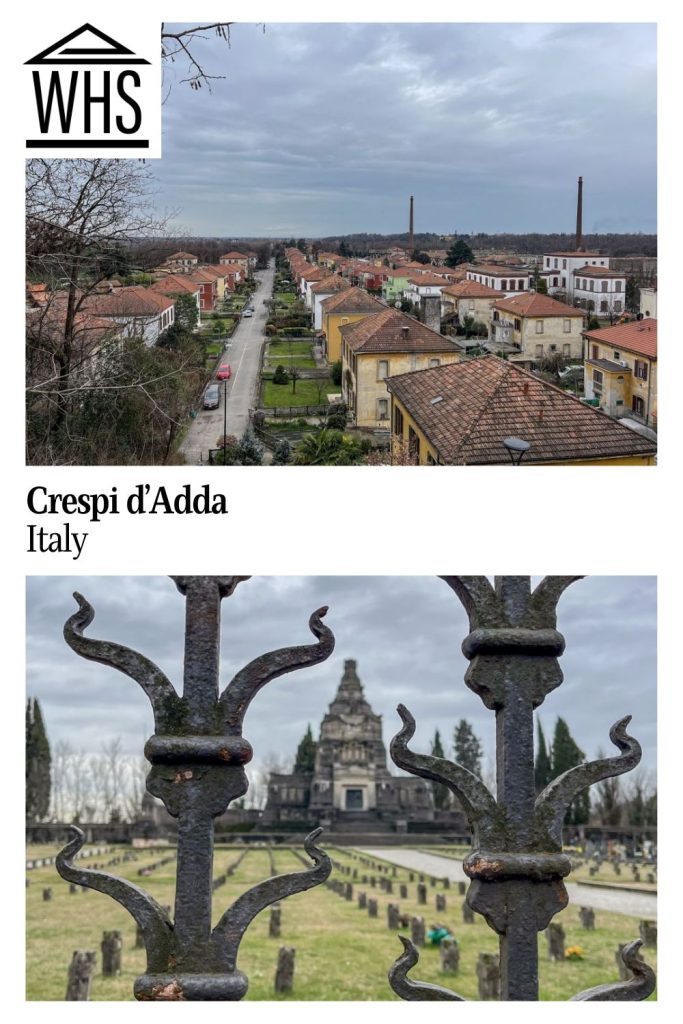
Disclosure: This article contains affiliate links. Making a purchase through an affiliate link will mean a small commission for this website. This will not affect your price. Privacy policy.
The Crespi family continued to run the cotton mill and town until WWI. In the 1920s, during the Fascist period, a trade unionist came in and took it over. It remained in the ownership of a single company until the 1970s. At that point many of the houses were sold individually. The factory finally closed down entirely in 2004.
Today, it’s a small-town neighborhood, where you can see pristine basic row houses, created identically on a harmonious grid pattern.
Why is Crespi d’Adda a UNESCO World Heritage site?
Crespi d’Adda received UNESCO World Heritage status in 1995 based on two criteria. UNESCO explains that Crespi d’Adda is “an exceptional example of a working village of Europe and North America, dating back to the 19th and 20th centuries, and reflecting the predominant philosophy of enlightened industrialists with respect to their employees.” At the same time, it is remarkably intact in terms of its layout and architecture, especially considering that the economy of the area has changed significantly.
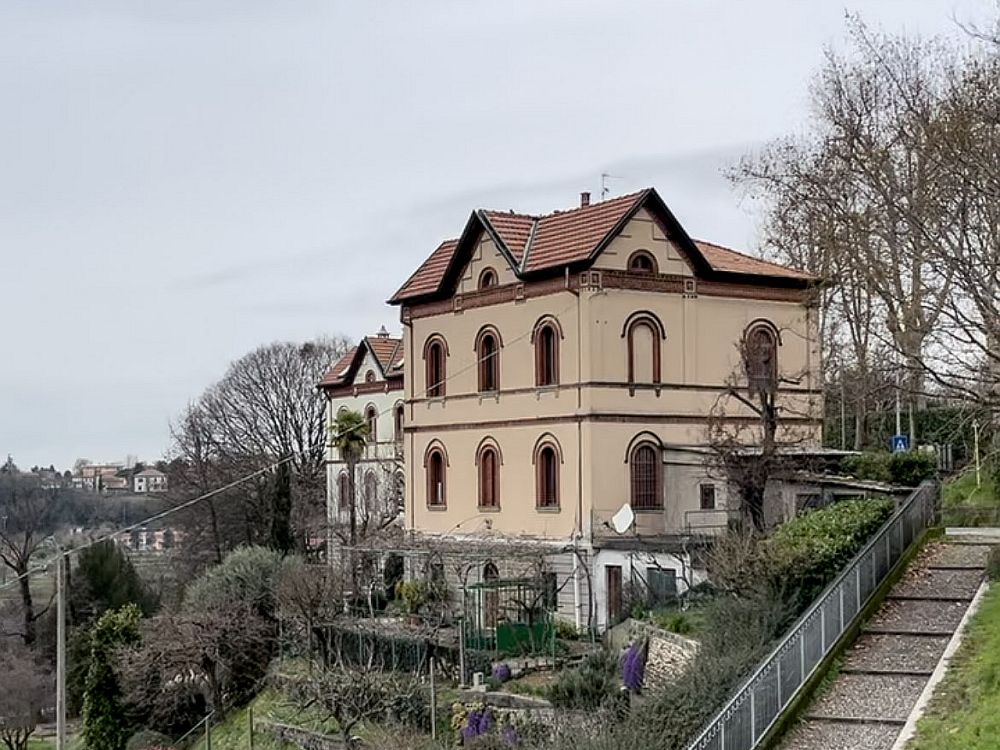
What can you expect on a visit to Crespi d’Adda?
On a visit to Crespi d’Adda, you can see this perfectly intact town from the 1920s. One way to enter it is by hiking from the Adda River, where you pass through gates and can see the imposing exterior of the castle where the Crespi family lived.
All the buildings were based on the class system. Thus, as owners of the factory, the Crespi family lived in the largest building, with intricate architectural details to show off their wealth and to show that they were of the highest class.
Walking from the castle, in about five minutes you enter the central part of the town where the visitors’ center sits in the former school building. There are also a couple buildings that now include restaurants, where you can enjoy a lunch.
The homes in Crespi d’Adda
From the visitors’ center, I recommend heading left up a stone path to the top of the hill. Here, you can admire two houses that look down on the settlement of Crespi d’Adda. The first was for the local town priest – strategically placed at the top of the hill so that he could look out over his flock of parishioners.
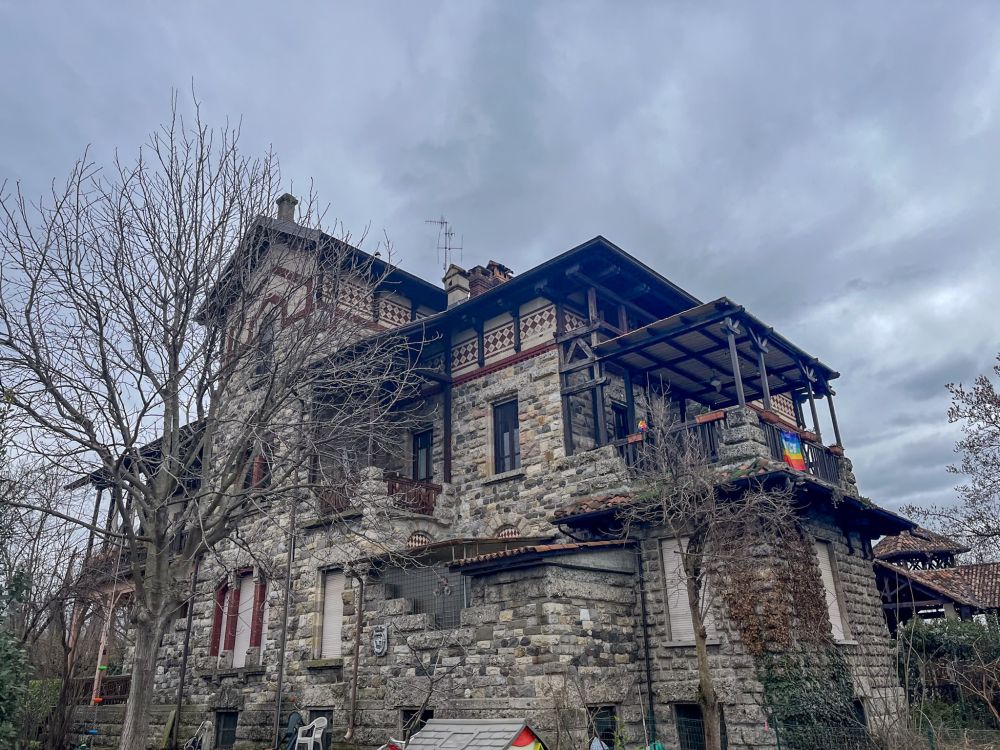
The second house, just to the left, was for the town doctor, also strategically placed so that anyone in need of his services could easily find him and so that he could also look out over his patients. As both positions were highly educated, you’ll see that these two houses are larger and have more architectural details to set them off – showing the higher status of the two men filling these positions.
Looking down from this hill, you get a great view of the factory workers’ houses. Each house is identical in shape, with space for two families in each, and a small garden area in front surrounded by a fence. All of these houses are laid out in rows of straight lines based on a grid.
Walking a few minutes to the next section of town, you come to the villas (houses) where the factory managers lived. Again, you’ll be able to see immediately the classist system, as these homes were built in magnificent stone, with large yards and lots of architectural details.
Today, the homes are still lived in – mostly by descendants of the former factory workers of Crespi. The homes were put up for sale mostly in the 1970s as the textile factory started to head toward decline. Homes are well maintained, and flowers bloom in the gardens.
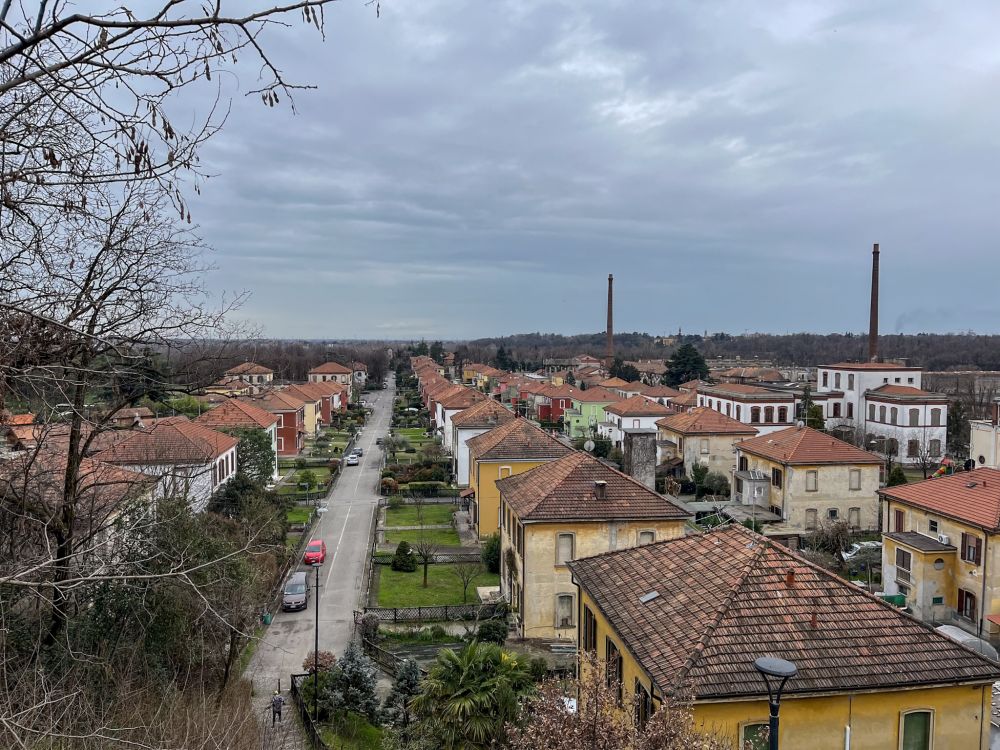
However, in all honesty, visiting on a weekday, the town has a bit of an eerie feeling. The best way to describe it is a cross between an abandoned village and a movie set. That’s because the buildings are in very good shape, but you don’t see anyone entering or exiting them. I didn’t even see any cars on the streets.
The factory
After visiting the housing area on the eastern side, you’ll want to cross to the western side of the grid. Here, you can see the outside of the factory buildings where textiles were manufactured. Huge brick smoke stacks tower above the factory buildings.
Given the utopian ideals of this village’s creation, all the factory buildings are on the western side of town and the residences and services on the eastern side. The idea was that when you left the factory, you left work behind to focus on domestic life.

The eastern side of town contained all the houses and services: bath houses, the school, the church, and an after-work club for social activities. Having a range of services like this for factory workers was a luxury at the time. Yet it was distinctly paternalistic: it even went so far that all of the residents had bathing cards that the bathing clerk filled in when they bathed. This was to prove that they had a bath at least once a week. Remember that in the 1920s, most homes did not have indoor plumbing, thus no bathroom.
The cemetery
About a five-minute walk outside of the main town area, you’ll find the entrance to an eerie-looking cemetery. A decorated steel fence guards it. Walking inside, you’ll see hundreds of small gravestones, which Mr. Crespi provided to the families of his workers for free. Sadly, many of these stones mark the graves of young children, as infant mortality was high due to the spread of diseases and the pulmonary conditions created by textile factories.
Even more eerie is the enormous Crespi family tomb at the center of the cemetery. It sits atop a three-tiered platform with bold green doors, topped by layers of carvings, a stone statue, and inscriptions.
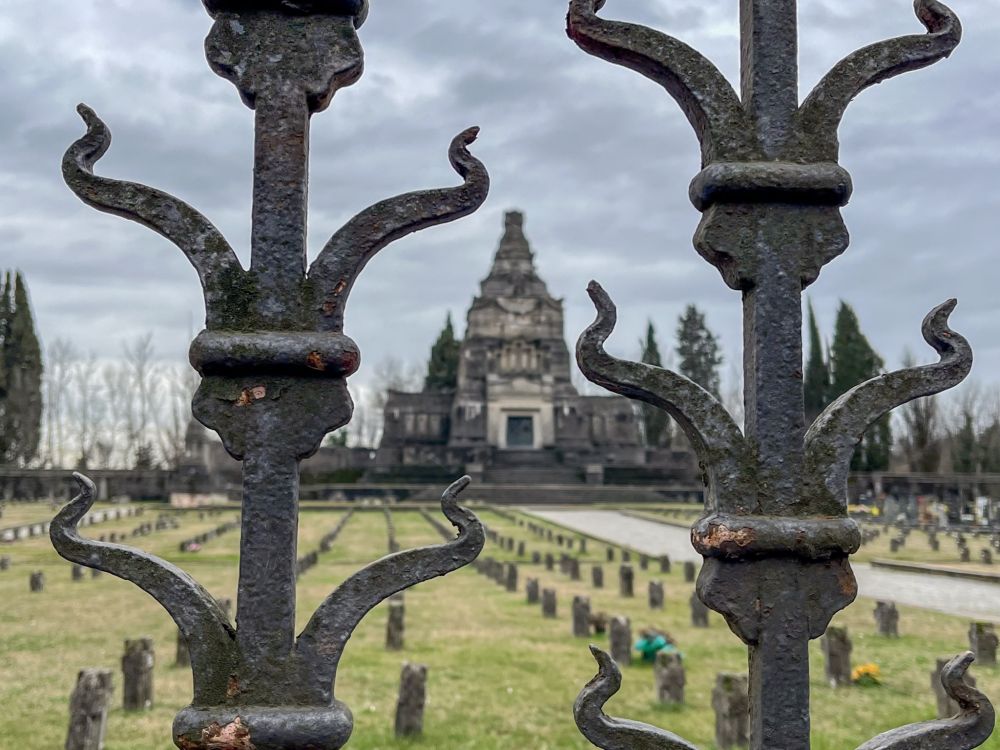
Is Crespi d’Adda worth visiting?
Yes and no. Visiting Crespi d’Adda is like stepping back into a time capsule from the 1920s. And it is quite interesting as it sparks an understanding of what it was like not only to be a factory worker during this period but also what it would have been like to live in 1920s Italy, in a small protected community.
If this is your first or only visit to Italy, or if you’re staying in Milan or Verona (also a UNESCO site) for just a couple of days, there are other places I would prioritize visiting first, such as Lake Como and the city of Milan itself. And there are many other UNESCO sites all over Italy.
However, if you have been to Italy before and are looking for something unique for an afternoon activity, Crespi d’Adda is worth a visit, especially if you’re able to time your visit with a guided tour to enter some of the historical buildings.
What sort of travelers would like Crespi d’Adda?
History buffs, hikers and explorers would like visiting Crespi D’Adda. Anyone with a particular interest or expertise in industrial history would enjoy seeing this intact workers’ town.
Tips for visiting Crespi d’Adda
To fully enjoy the village you’ll want to wear comfortable walking shoes or sneakers as the site is a bit spread out.
It’s best to go on a morning or weekend when the multimedia museum is open. The museum is a bit like a time capsule, offering up the stories, struggles, and dreams of the working class who lived in the village with historical photos, vignettes, and objects.
On select Sundays, guided tours are available of Crespi D’Adda village, the museum, the textile factory, and the power plant. Being able to enter the buildings gives you a better perspective in understanding what it was like living and working here.
To really understand the spirit of this place, I would only recommend visiting with a guide or when the museum is open. Otherwise, it’s tough to understand what makes this spot special.
Plan for at least 2-3 hours to be able to walk around the village, see the museum, and take a guided tour of the factory or power plant.
Book your accommodations near Crespi d’Adda, or in Milan, Verona or Bergamo.
Where is Crespi d’Adda?
Crespi d’Adda is located in the Province of Bergamo, Italy, less than an hour outside of Milan, Italy. The fastest way to get there is to drive the 45 km (28 mi) from Milan. That will take about 35 minutes. From Verona the drive is about 1.5 hours, while Bergamo is much nearer: a 25-minute drive.
Compare rental car prices here.
Alternatively, you can reach it via public transportation from Milan in about 1 hour and 45 minutes. Take the Green Metro Line (M2) to Gessate and then connect to a bus (Z310) to arrive to Trezzo D’Adda. From there, it’s a 20-minute walk to the Crespi d’Adda site.
For more information about Crespi d’Adda, its opening hours, and admission fees, see its official website.
Have you been to Crespi d’Adda? If so, do you have any additional information or advice about this UNESCO World Heritage site? Please add your comments below!

